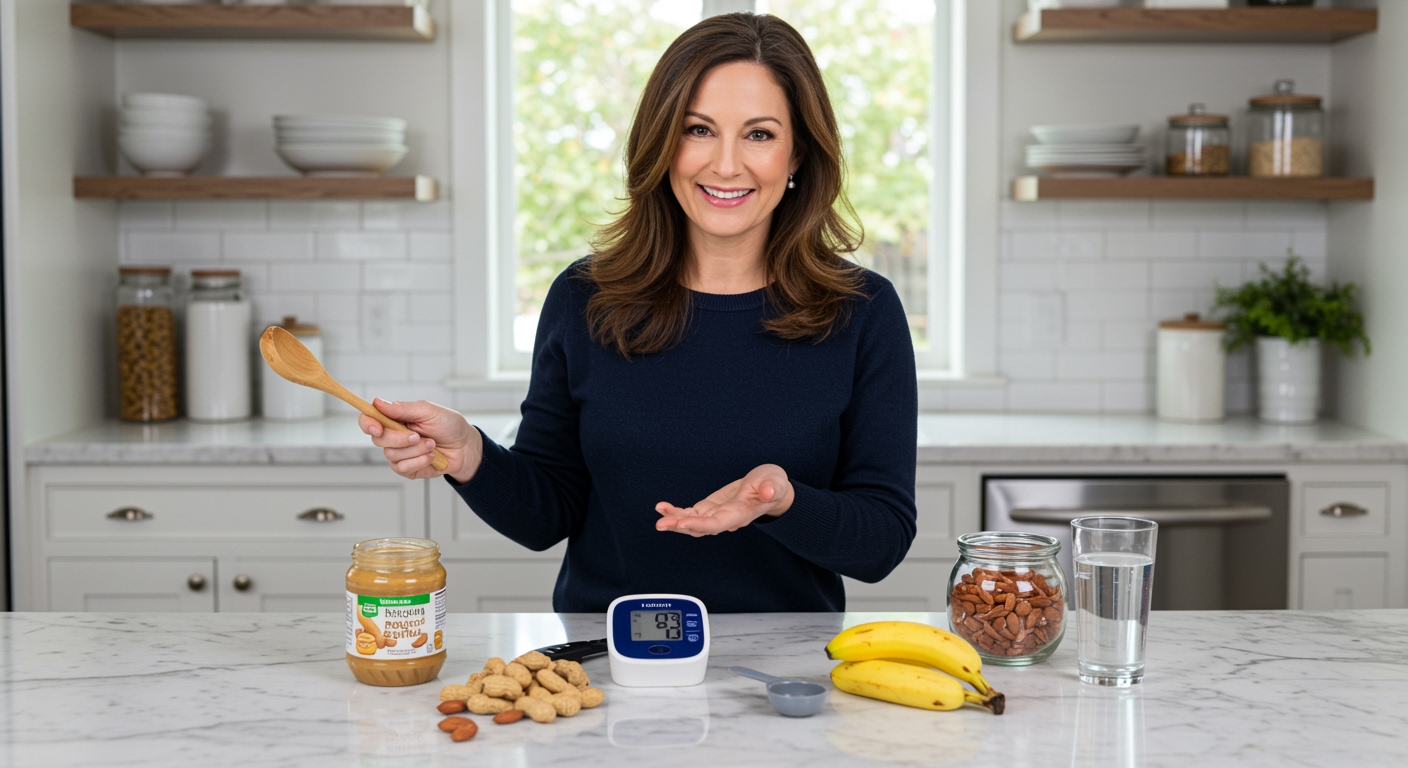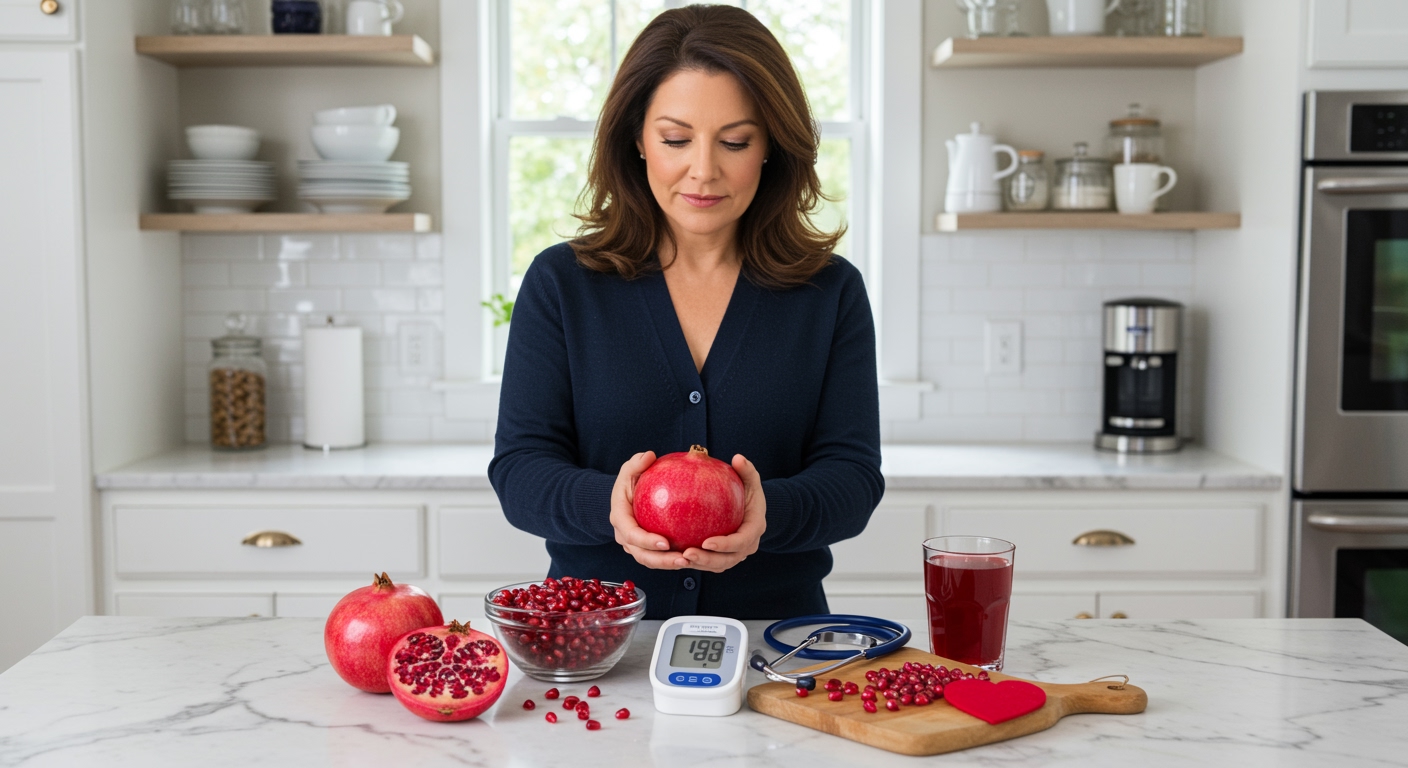✪ Key Takeaway: Peanut butter can help low blood pressure through magnesium, potassium, and healthy fats that support circulation.
Introduction
Your doctor just told you that your blood pressure is too low and you need to make some dietary changes.
You might be wondering if that jar of peanut butter in your pantry could actually help raise your blood pressure to healthier levels instead of just satisfying your late-night cravings.
Hi, I am Abdur, your nutrition coach and today I am going to explain how peanut butter affects low blood pressure and whether this popular spread deserves a spot in your heart-healthy eating plan.
What Makes Peanut Butter Good For Blood Pressure?
Peanut butter contains several key nutrients that directly support healthy blood pressure levels through different mechanisms in your body.
The magnesium content in peanut butter helps relax your blood vessel walls, which allows blood to flow more easily through your circulatory system.
Two tablespoons of natural peanut butter provide about 49 milligrams of magnesium, which represents roughly 12 percent of your daily needs.
Potassium works alongside magnesium to help your kidneys remove excess sodium from your bloodstream while supporting proper muscle contractions in your heart.
The healthy monounsaturated fats in peanut butter help improve your overall cardiovascular health by reducing inflammation in your blood vessels.
These fats also help your body absorb fat-soluble vitamins that support heart function and blood vessel integrity.
✪ Pro Tip: Choose natural peanut butter without added sugars or hydrogenated oils for maximum heart health benefits.
How Much Peanut Butter Should You Eat For Low Blood Pressure?
The ideal serving size for peanut butter when managing low blood pressure is two tablespoons per day, which provides optimal nutrients without excessive calories.
This amount delivers approximately 190 calories, 8 grams of protein, and significant amounts of heart-supporting minerals like magnesium and potassium.
You can spread this serving throughout the day by having one tablespoon at breakfast on whole grain toast and another tablespoon as an afternoon snack with apple slices.
The protein content in peanut butter helps stabilize your blood sugar levels, which prevents the dramatic drops that can worsen low blood pressure symptoms.
Eating peanut butter with complex carbohydrates creates a sustained energy release that supports steady blood pressure throughout the day.
Avoid eating more than three tablespoons daily because excessive amounts can lead to unwanted weight gain, which may create new cardiovascular challenges.
✪ Fact: Two tablespoons of peanut butter contain more potassium than a medium banana.
When Should You Avoid Peanut Butter For Low Blood Pressure?
People with peanut allergies should obviously avoid peanut butter completely and choose alternative nut butters like almond or sunflower seed butter instead.
If you have severe low blood pressure that requires immediate medical intervention, peanut butter alone will not provide the rapid correction your condition demands.
Those taking blood pressure medications should consult their healthcare provider before significantly increasing peanut butter consumption because the combined effects might alter medication effectiveness.
People with kidney disease need to monitor their potassium intake carefully, and the potassium in peanut butter might exceed their dietary restrictions.
If you experience digestive issues like bloating or stomach discomfort after eating peanut butter, these symptoms could worsen low blood pressure by affecting your nutrient absorption.
Choose organic, natural peanut butter without added salt if you are trying to avoid excess sodium while managing your blood pressure naturally.
✪ Note: Always read ingredient labels because some peanut butters contain added sugars that can cause blood sugar spikes.
What Other Foods Work Well With Peanut Butter For Blood Pressure?
Combining peanut butter with whole grain bread creates a balanced meal that provides complex carbohydrates for sustained energy and additional B vitamins that support heart health.
Banana slices with peanut butter offer extra potassium and natural sugars that help maintain steady blood pressure while satisfying your sweet cravings.
Adding peanut butter to your morning oatmeal increases the fiber content and provides sustained energy that prevents blood pressure dips throughout the morning.
Dark chocolate paired with peanut butter gives you flavonoids that support blood vessel flexibility while the combination satisfies dessert cravings in a heart-healthy way.
Celery sticks with peanut butter provide additional natural sodium and water content that can help maintain proper blood volume for people with low blood pressure.
Greek yogurt mixed with a spoonful of peanut butter creates a protein-rich snack that supports muscle function and provides probiotics for better nutrient absorption.
✪ Pro Tip: Drink plenty of water when eating peanut butter to help your kidneys process the protein and minerals effectively.
The Bottom Line
Peanut butter can definitely support healthy blood pressure levels through its rich content of magnesium, potassium, and heart-healthy fats that work together to improve circulation and cardiovascular function.
Good nutrition is not about perfection but about making consistent choices that support your long-term health goals.
I would love to hear about your experiences with peanut butter and blood pressure management, so please share your questions, success stories, or concerns in the comments below.
References
At NutritionCrown, we use quality and credible sources to ensure our content is accurate and trustworthy. Below are the sources referenced in creating this article:





